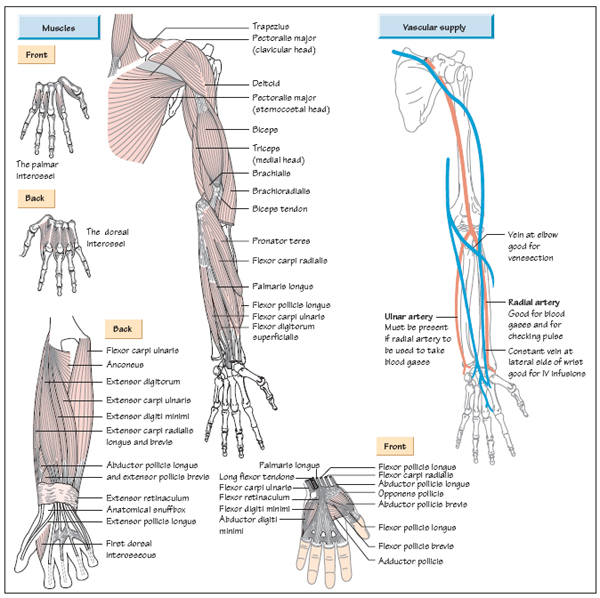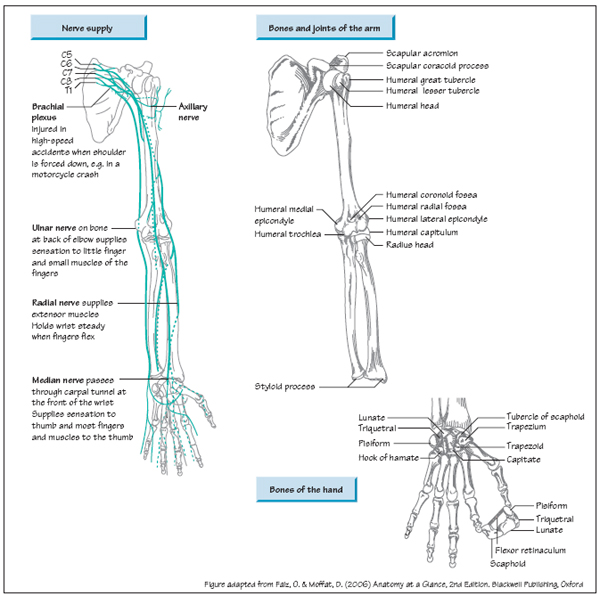5
Anatomy of the arm


Function
One of the great steps forward in human evolution was the freeing up of the forelimbs for using tools. The human hand is now primarily adapted to hold and manipulate objects. The arms have evolved to enable the hands to be accurately placed, and firmly held, in space in as many positions as possible.
Nerves
The nerve supply to the upper limb arises from the lower cervical and upper thoracic spine (C3 to T3). The axillary nerve supplies the deltoid muscle and is commonly temporarily damaged following an anterior dislocation of the shoulder. One of the main nerves to the hand (the median nerve) passes into the hand through the narrow carpal tunnel under the flexor retinaculum where it can be compressed (carpal tunnel syndrome). The other main nerve to the hand, the ulnar nerve, is also at risk for entrapment as it passes through a groove in the bones behind the medial side of the elbow joint. The digital nerves to the fingers are very easily injured by any penetrating wound to the hand or fingers.
Vessels
The blood supply of the upper limb passes through the upper arm along a single artery, the brachial artery, so any damage to that artery from external trauma or an embolus will critically compromise the blood supply to the hand. Both nerves and vessels are easily damaged in the upper limb, but cannot be seen on X-ray, so always check distal neurovascular status whenever examining a limb.
Stay updated, free articles. Join our Telegram channel

Full access? Get Clinical Tree




